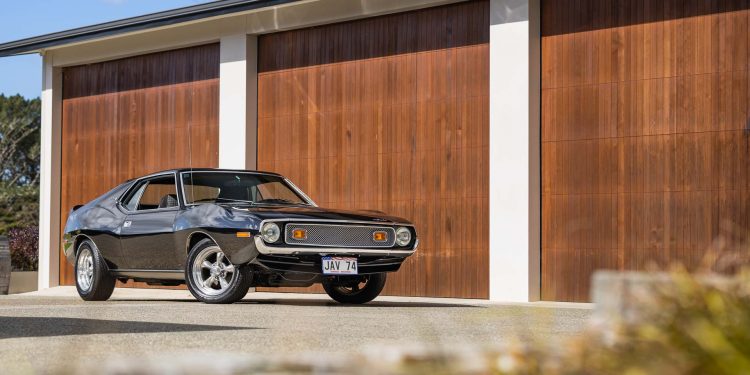The AMC Javelin may be the forgotten one of the pony car era but that makes it a bit special. It is a rare sight on our roads and this 1974 example is one of the last AMC made.
In the American ‘pony car’ wars of the late 60s and early 70s, one combatant that often gets overlooked is the Javelin. This was American Motors Corporation’s (AMC) answer to the Mustang, ’Cuda, Camaro etc.
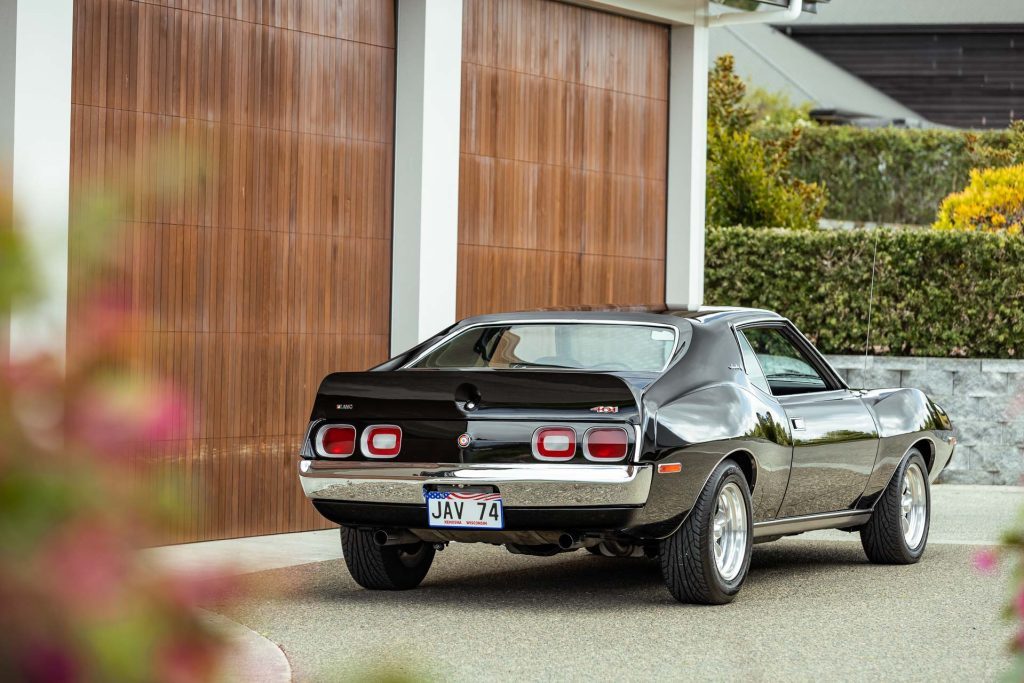
Even AMC is a forgotten entity. It was formed after Hudson Motors and Nash-Kelvinator merged in 1954. AMC battled away against the big three as an underdog, focusing on more affordable and economical cars.
Its brands like Hudson, Nash and Rambler would all eventually disappear but in 1970 AMC acquired Kaiser Industry’s Jeep division. These 4x4s would prop up the AMC bottom line throughout the decade and into the 80s, as would a deal with Renault.

But things unravelled further as sales declined and ultimately it was taken over by Chrysler, which was after the Jeep brand, in 1988.
While AMC is probably better known for oddities like its Gremlin and AMC Pacer, the Javelin is our topic this month. Introduced in 1968, it was AMC’s response to the booming pony car market.
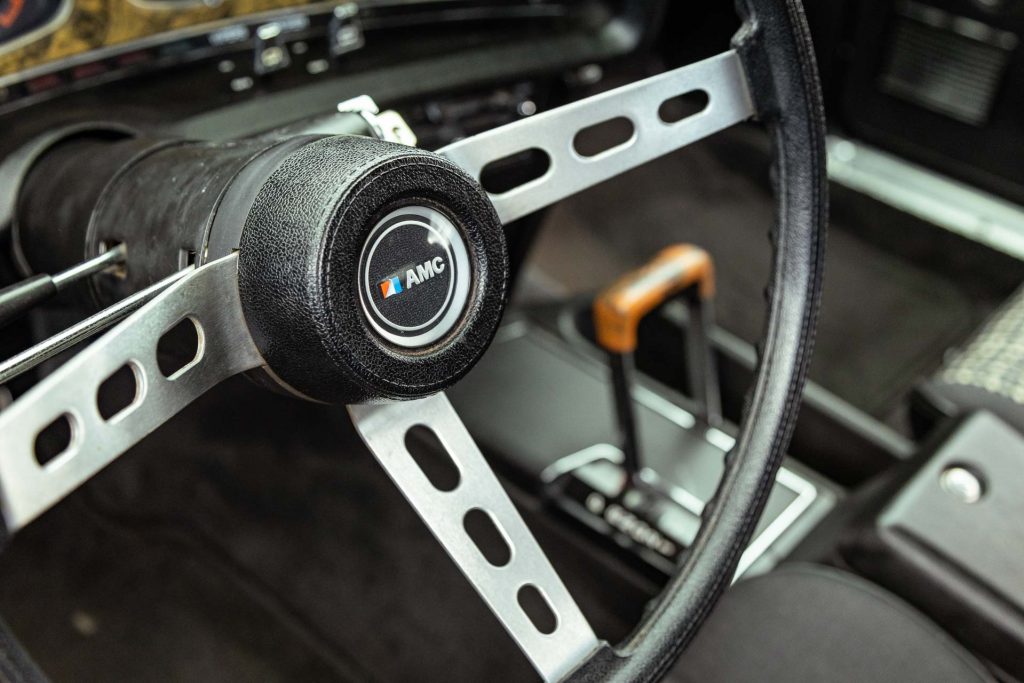
It was built on the Rambler American platform and featured a fastback body style. AMC was a much smaller company than Ford and GM, without such outlandish budgets, and so there was only one body style offered; no convertibles or notchback coupes here.
Engine options ranged from a straight six to various V8s. Transmission choices were the usual three- and four-speed manuals or a three-speed auto. Like the competition, various handling kits were available.
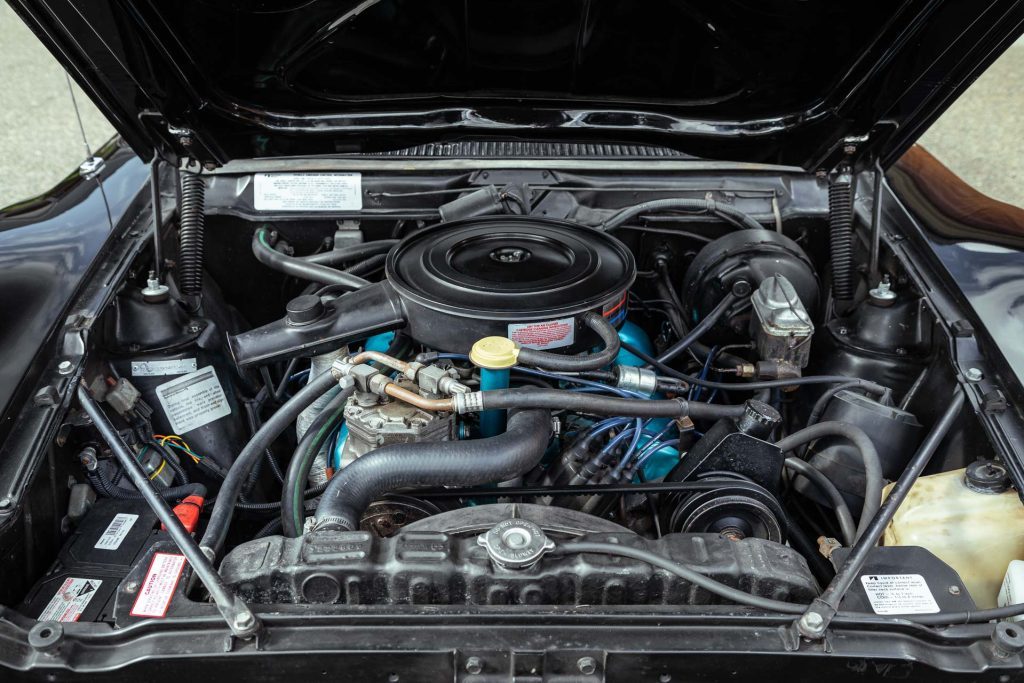
AMC’s ‘Go Package’ included a powered-up 343 cube V8 with a four-barrel carb, power front disc brakes, heavy-duty suspension and the mandatory body stripes.
Rolling styling updates were popular at the time in the American car industry, and so the styling evolved almost annually. And bigger engines were introduced as the horsepower wars heated up, a 390 V8 being added with 235kW and 570Nm of torque.
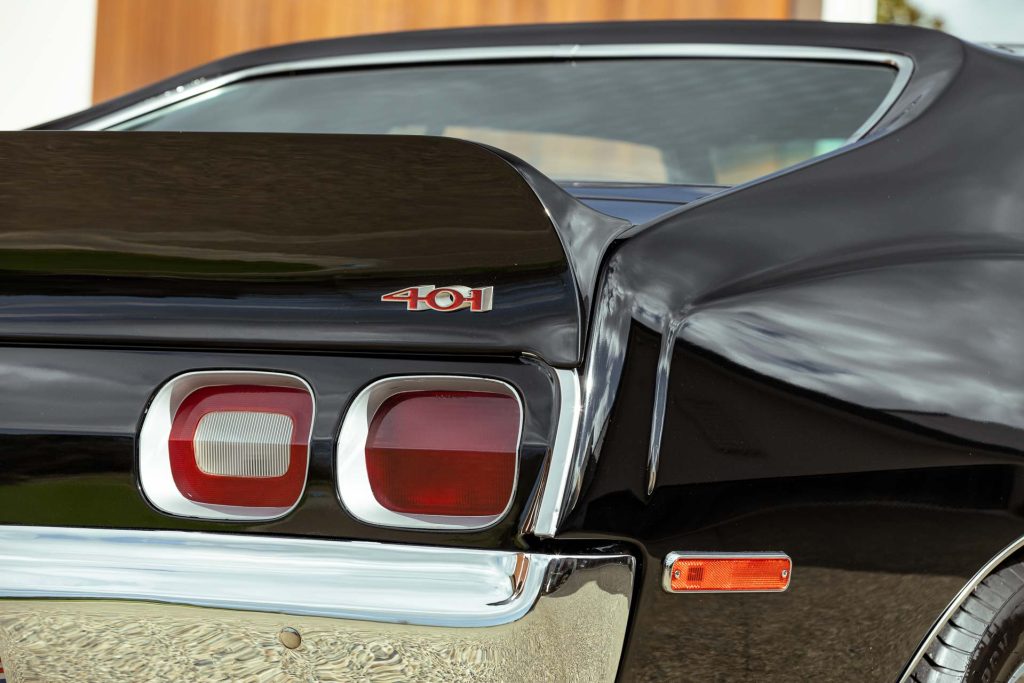
Backtracking slightly, it’s not entirely correct to say there was just one body style offered as AMC also produced the AMX for a short period, though it was a separate model.
While Javelin-based, this had a shortened wheelbase, just two seats and was pitched as a sportier model. But it never really caught on and it was short-lived. After its demise in 1970, the AMX badge was affixed to the high-performance Javelin model.
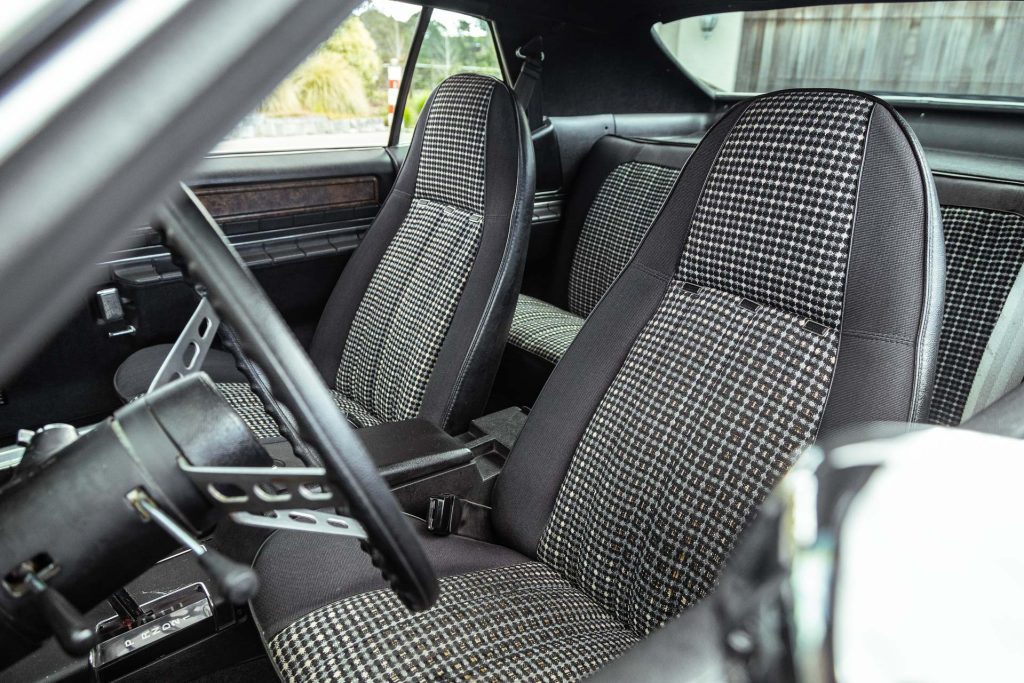
The second-generation Javelin came along in 1971 and, like its rivals, it grew in size as they all adopted a bigger-is-better mantra. So there was a longer nose, the roof was elongated and it incorporated a subtle spoiler.
It was slightly longer in the wheelbase and wider too. A few of the styling changes were born out of a necessity to win on track.
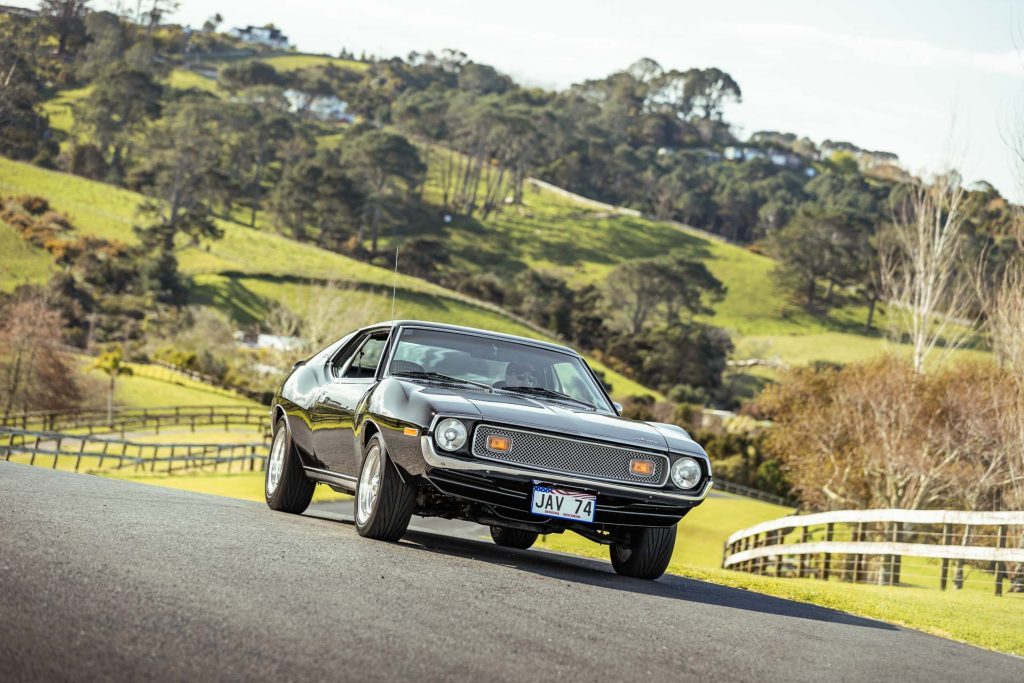
The previous year, Penske racing moved from Chevrolet to AMC with Roger Penske and Mark Donohue teaming up to campaign the Javelin in the SCCA TransAm series.
The ducktail spoiler you see on this 1974 car was something the race team added to a special run of 1970 Javelins to homologate it for racing. It was subsequently continued on the second-generation cars.
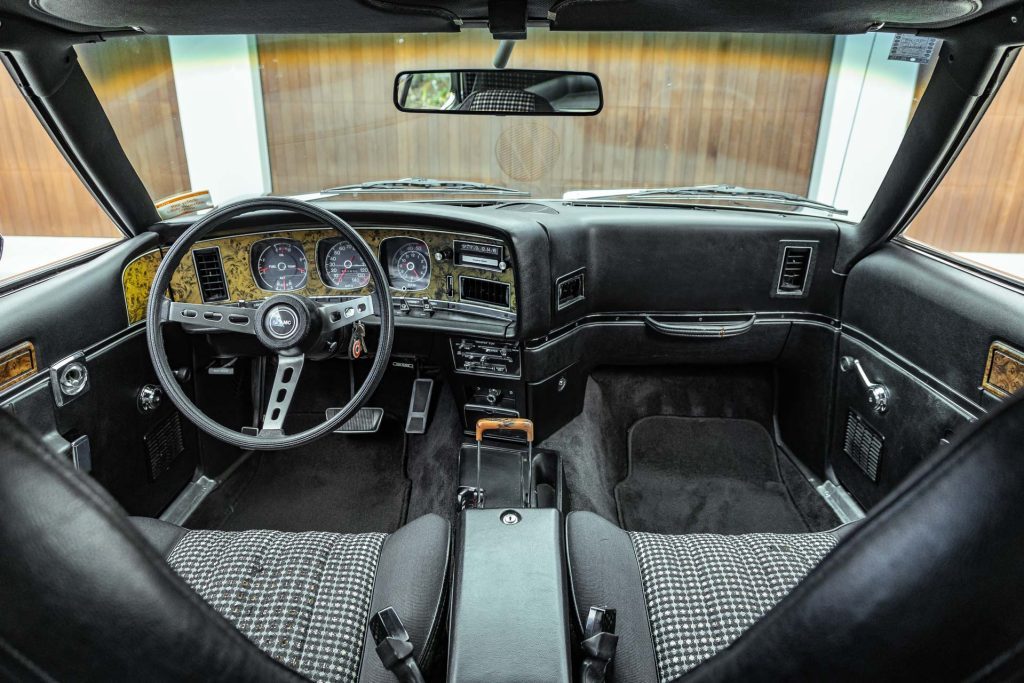
The blistered front guards not only bulged out wider but also upwards. That allowed the race cars to fit bigger, grippier tyres up under the arches when it was lowered. It was a successful partnership as AMC won the TransAm series in 1971, 72 and again in 1976.
Along with a redesign inside, the engine line-up included a 401 cube V8. With a four-barrel carb and a higher compression ratio, it kicked out 246kW and 583Nm of torque.
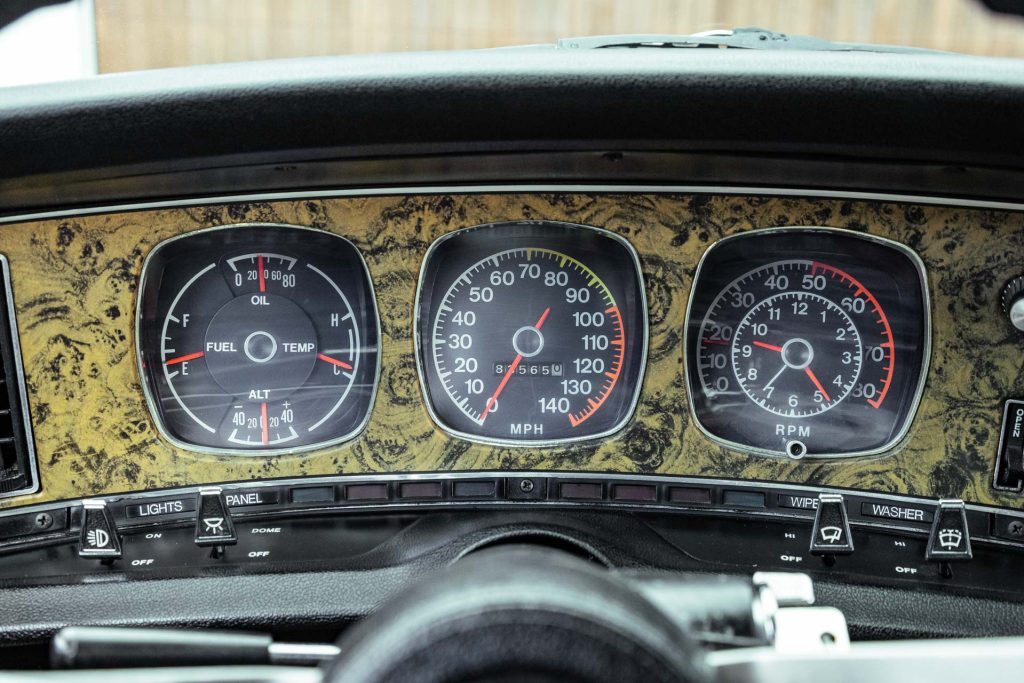
The demise of the Javelin came at the end of 1974 as AMC was not prepared to invest the money to meet new crash standards for the coming year.
It had also introduced a new model line, the Matador, which included a Coupe variant. Capping it off, the market had turned and downsizing was the new trend in the wake of the oil crisis.
AMC didn’t churn out a huge number of Javelins, with just 227,600 made over its short life. By comparison, Ford sold over 385,000 Mustangs in 1974 alone (and over 3.3 million Stangs in total up until that point).
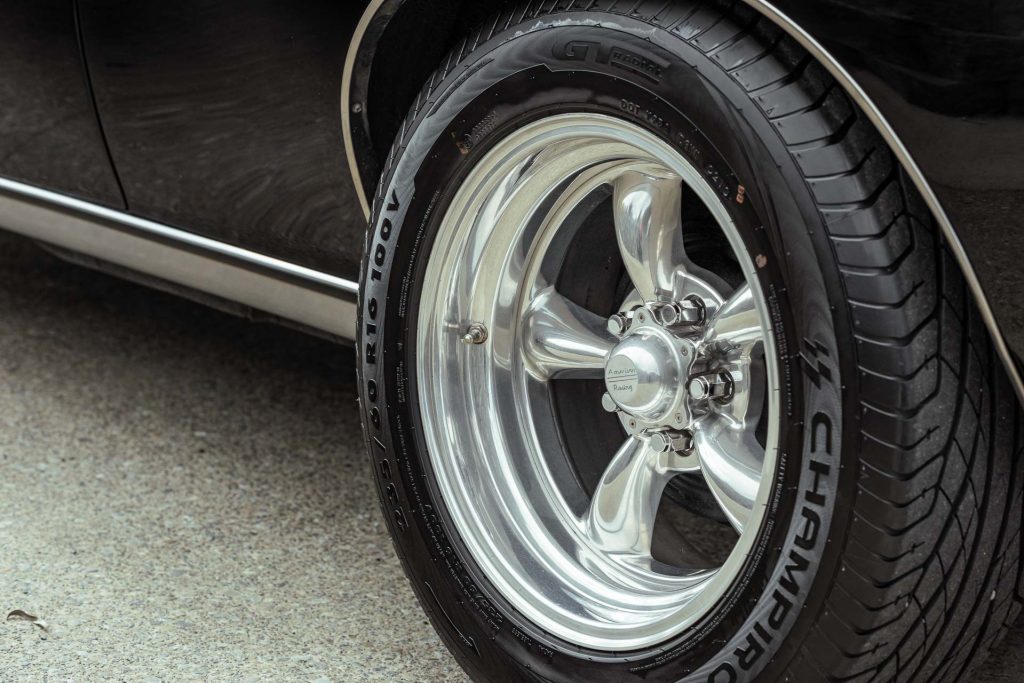
So these are relatively rare in the world of muscle cars. And among the rarer of them are the last of the Javelins, 1974 being the year with the fewest built.
This car here, owned by Aucklander John Campbell (no, not the reporter), is one of those.
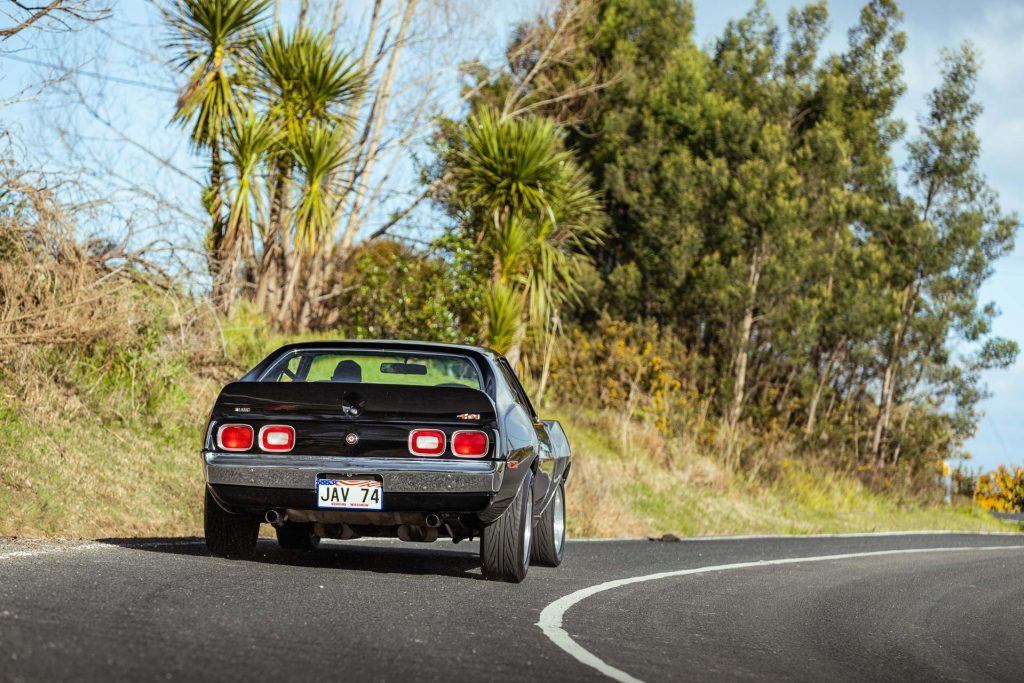
Having owned this for 11 years, John says he has always had a soft spot for the Javelin. “My interest in AMC comes from owning Jeeps. I became interested in the history of AMC and I thought if I got the chance to buy a Javelin one day, that would be a dream come true.”
This is not his first Javelin love however. Prior to this, he bought a 1974 example out of California.
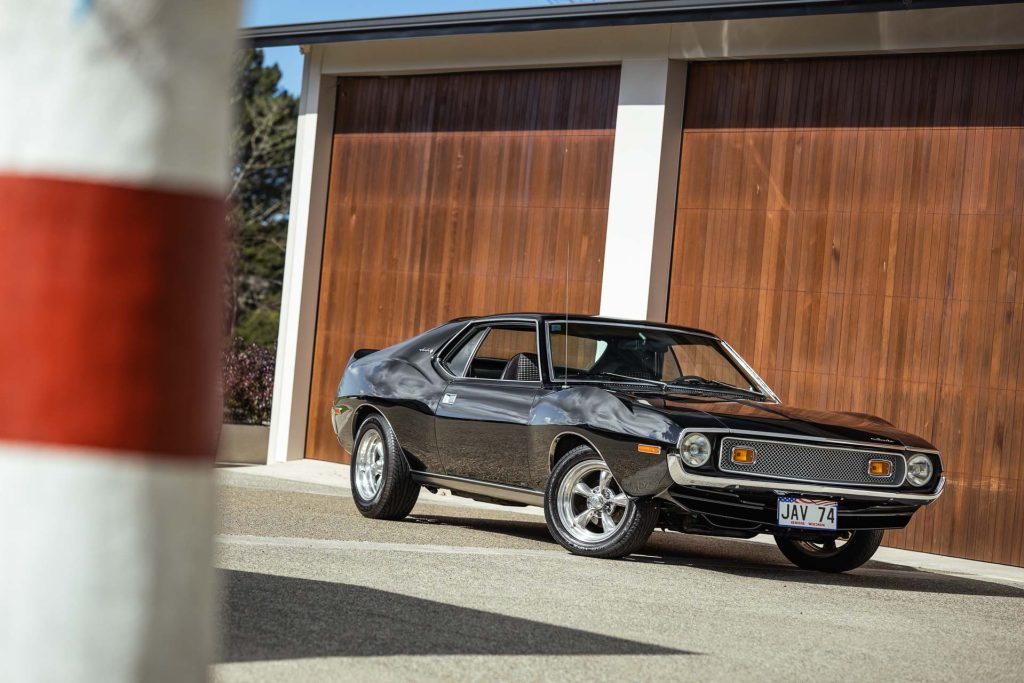
“It was a good, one owner car, but it needed some work, more than I was really willing to commit to.”
After getting it registered, he ended up selling it at the Beach Hop. And that led him to hunting down this particular example.
“It was on eBay in America. The starting price wasn’t high, and as the auction was due to close, no one had bid on it. So I went to bid, then realised I wasn’t logged in. And by the time I managed to log myself in, the auction had closed. I thought I lost it.”
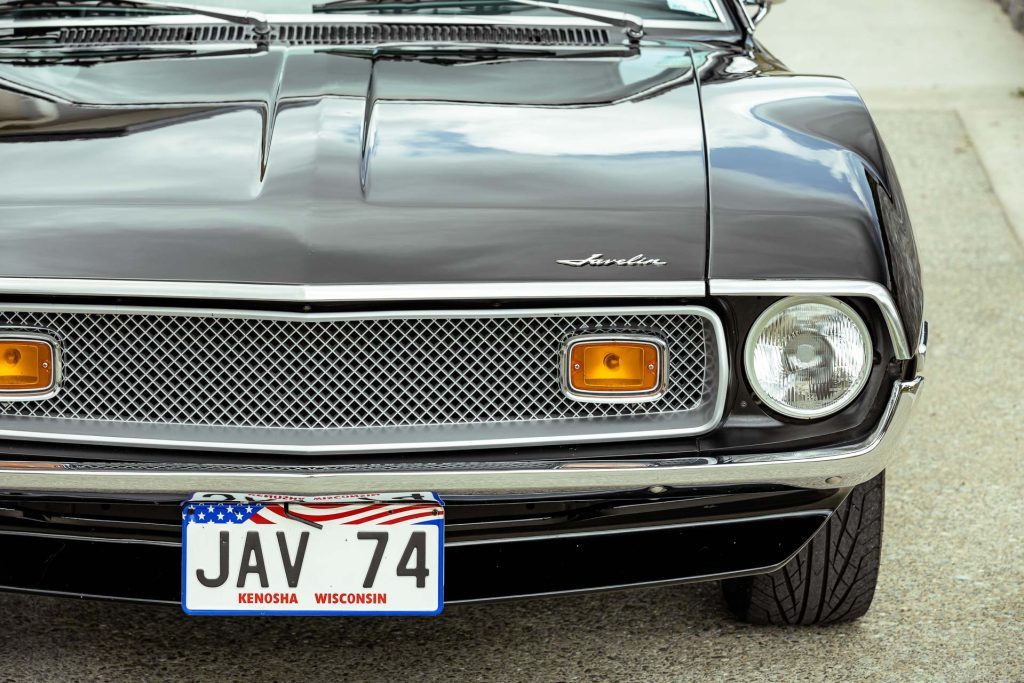
However, John managed to email the seller and ended up buying it for the start price.
And they’ve stayed in contact since. “I sent him photos of the Javelin at Americarna in New Plymouth and he ended up coming to NZ and attending the show with me.”
“Buying the car has been the start of a great friendship. He was blown away with how many American cars were down here, especially older Corvettes.”
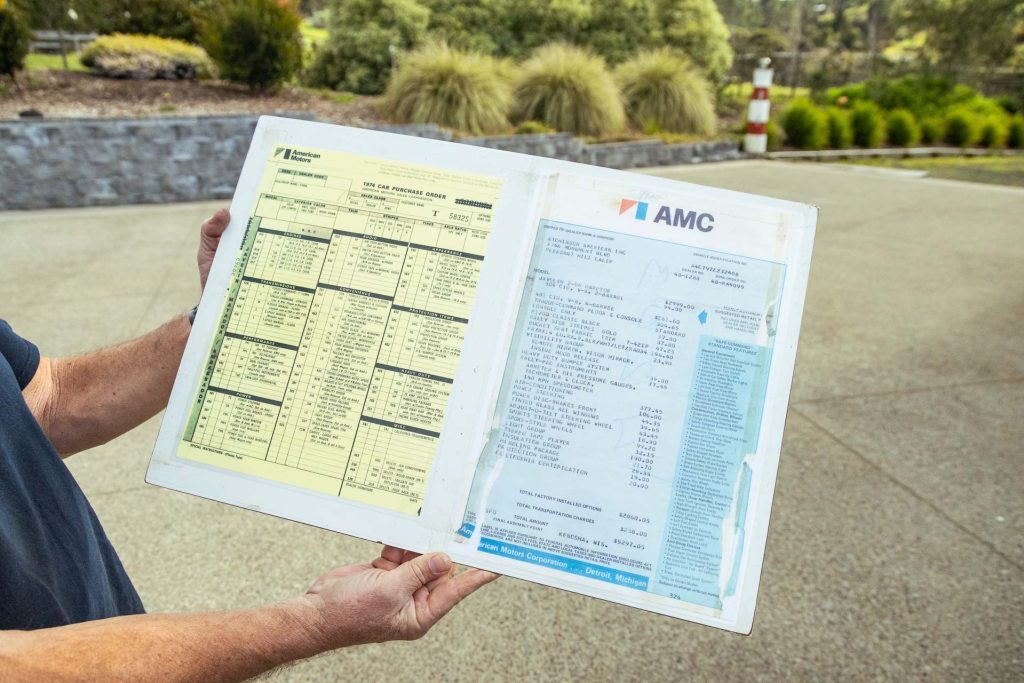
As to the car itself, it’s an entry-level 1974 Javelin but it’s loaded with extras. “Whoever ordered this car ticked a lot of the boxes.”
From its purchase order, the base price of the two-door hardtop was $2999 in 1974. But with the options added, the car cost its original owner $5297.
The upgrade to the big 401 engine was relatively cheap at $161, while the Torque Command three-speed auto trans behind it was $304. Air con was a pricey $377, power steering added $106, and the stereo tape player was $190.
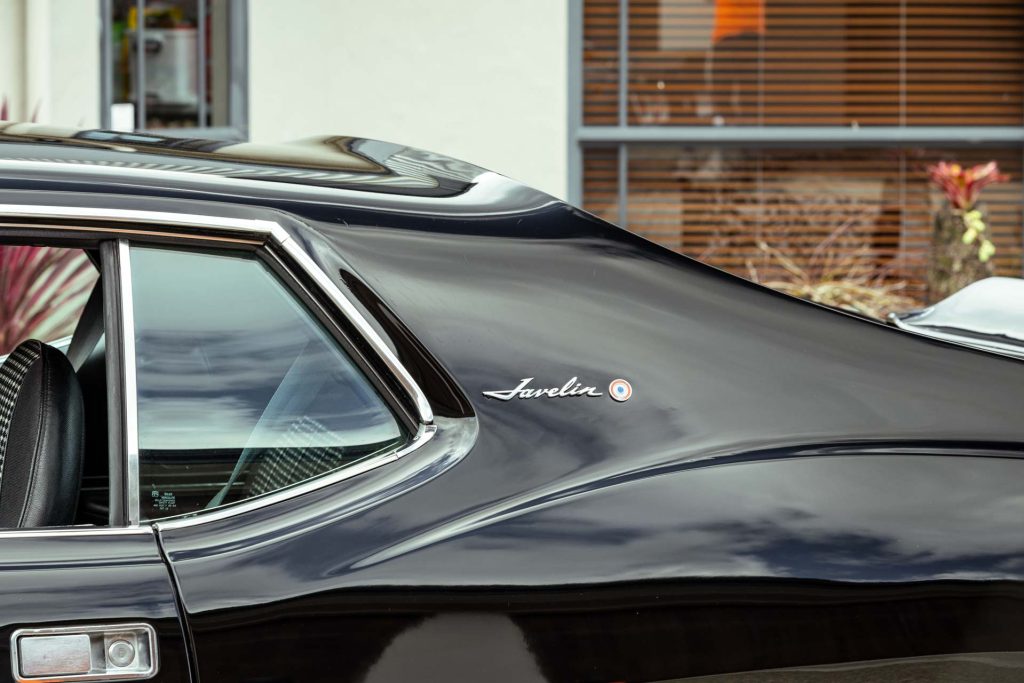
In 1974, the last year of Javelin production, there were only 217 produced with the 401 engine, making it a rarity, and this car was built in December, making it one of the last off the line.
As we mentioned these are rare cars here and, according to Car Jam data, there are just 27 AMC Javelins registered in New Zealand. There are more Jowett Javelins rolling around than AMC versions, so no wonder you don’t see them often.
John likes that however. “It’s nice to drive into car events and hearing people say ‘Look, it’s a Javelin’. People know what they are but it’s nice to stand out as being unique.”
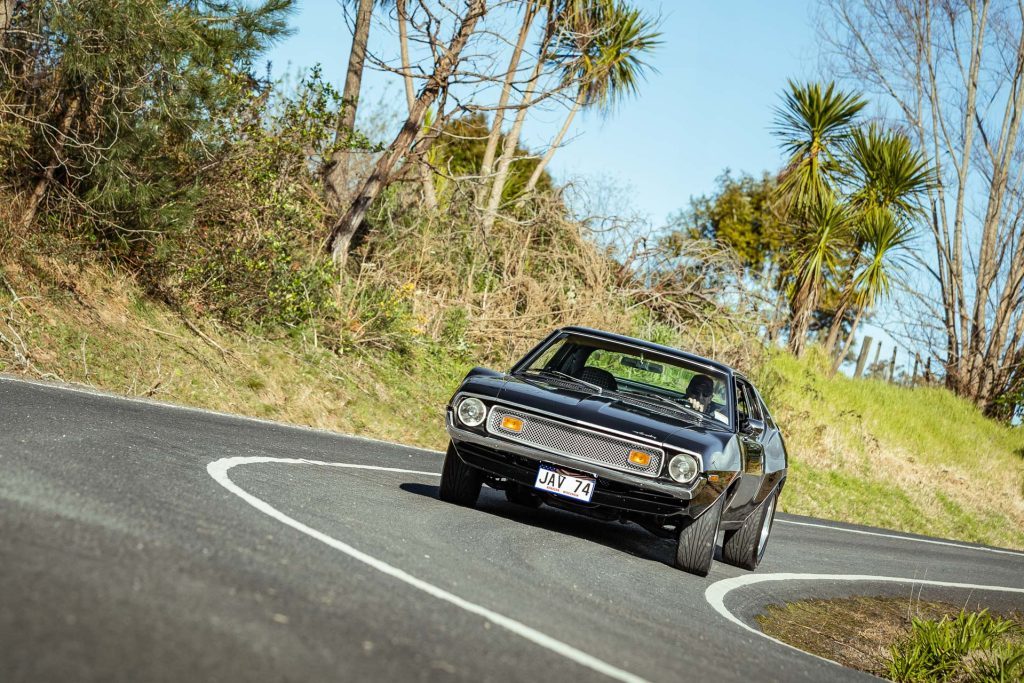
During the summer months he gets out to a lot of car events. “I have a bit of an aversion to it getting wet, or at least putting it in the garage when it’s wet. Those old body panels and moisture don’t mix well.
“But I love driving it around, it’s not a trailer queen. Those cars that win awards but have arrived at the show on a trailer….yeah, each to their own but I prefer to drive to the event. I just love driving it.”
The Javelin wasn’t the only AMC John’s had in his garage, having owned a 1980 Spirit.
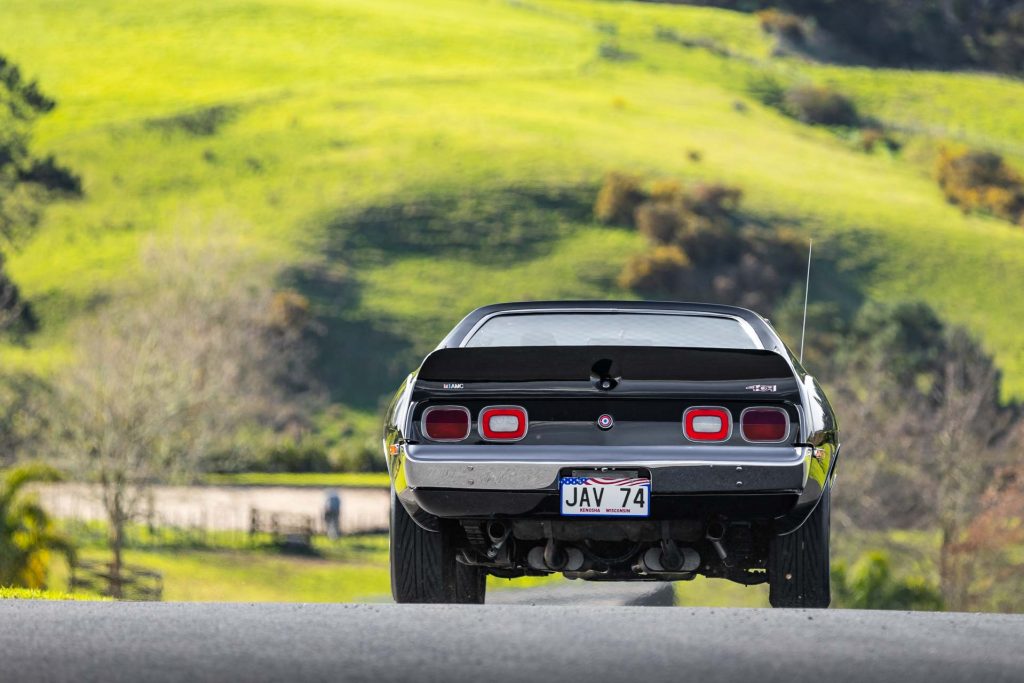
“It was the revamped Gremlin, but with fastback styling. It had a 4.2-litre straight six and four-speed manual. It was a great car to drive but I ended up selling that to help get my Jeep back on road.”
That’s a 1968 model that he’s owned since he was 18.
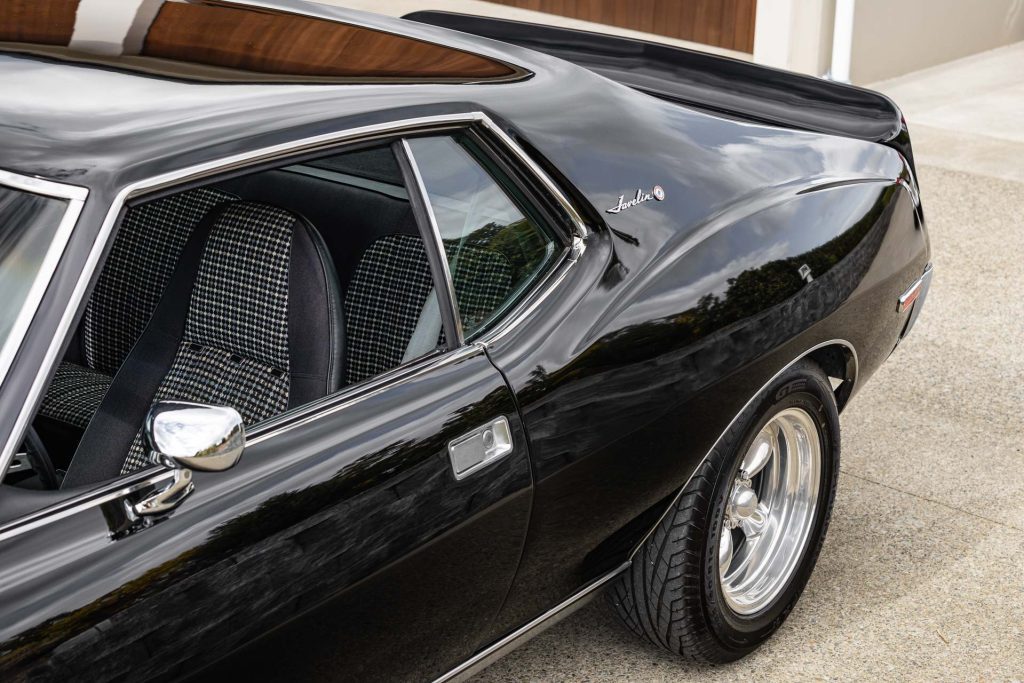
“It’s rego has been on hold for a number of years. It’s been sitting around for too long and something had to go, so I sold the Spirit. I wasn’t ever going to sell the Javelin.”
This article first appeared in the October 2024 issue of NZ Autocar Magazine.


